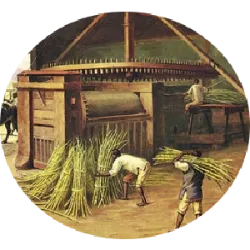The Evolution of Cachaça

The first Portuguese settlers in Brazil used bagasse and port wine, but they soon discovered a new drink made from fermented sugarcane juice and sugar byproducts, such as molasses and foam. Initially known as "cagaça" and intended for slaves, this drink evolved into cachaça. From 1584 onwards, the term "casa de cozer melis" (honey-making house) came to refer to both sugar mills and cachaça stills. In 1637, naturalist George Marcgraf brought the first boiler for producing sugarcane molasses to Pernambuco. Cachaça, created from byproducts similar to those used in rum and other beverages, became a currency in the slave trade and, with the discovery of gold in Minas Gerais, became highly appreciated by migrants and miners, helping to combat the region's cold.
Did you know??










